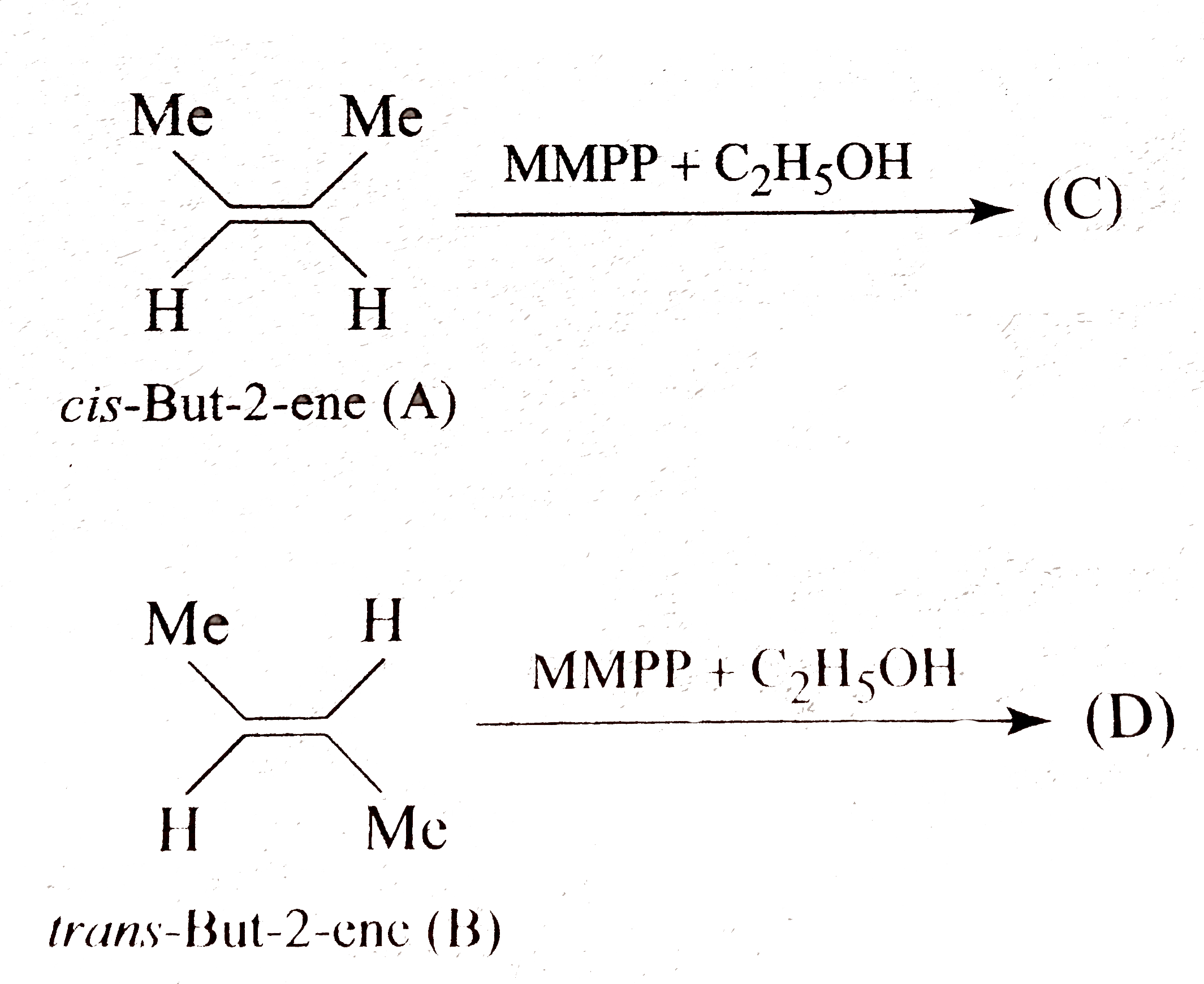Consider of following reactions
CHF3Ka−−→CF−3+H+
CHCl−3K+a−−→CCl−3+H+
Then regarding given reactions which of the following statement(s) is /are correct:
Ka>K'a
CHF3 act as a stronger bronsted acid than CHCl3
CCl−3 is more stable than CF−3
CCl−3 is weaker lewis base than CF−3
The correct Answer is:C, D
To analyze the given reactions and determine the correctness of the statements, we will follow these steps:
Step 1: Write the Reactions
The reactions provided are:
1. CHF3Ka⇌CF−3+H+
2. CHCl3K′a⇌CCl−3+H+
Step 2: Understand the Equilibrium Constants
The equilibrium constant K for a reaction is defined as:
K=(products)(reactants)
In these reactions, Ka and K′a represent the equilibrium constants for the dissociation of CHF3 and CHCl3, respectively.
Step 3: Compare the Stability of the Anions
- For CF−3:
- The negative charge is localized on carbon, which is bonded to three fluorine atoms. Fluorine is highly electronegative, which leads to increased electron density and repulsion around the carbon atom.
- For CCl−3:
- The negative charge is also localized on carbon, but chlorine has vacant 3d orbitals that allow for delocalization of the negative charge. This delocalization reduces electron repulsion and stabilizes the anion.
Step 4: Determine the Relative Strength of the Acids
- A stronger acid will produce a more stable anion upon dissociation. Since CCl−3 is more stable than CF−3, it follows that:
K′a>Ka
This indicates that CHCl3 is a stronger acid than CHF3.
Step 5: Analyze the Statements
1. Statement 1: K′a>Ka (CCl3- is more stable than CF3-)
- This statement is correct.
2. Statement 2: CHF3 acts as a stronger Brønsted acid than CHCl3.
- This statement is incorrect because CHCl3 is the stronger acid.
3. Statement 3: CCl3- is more stable than CF3-.
- This statement is correct based on the stability analysis.
4. Statement 4: CCl3- is a weaker Lewis base than CF3-.
- This statement is correct because the negative charge on CF3- is more available for donation compared to CCl3-.
Conclusion
The correct statements are:
- CCl3- is more stable than CF3-.
- CCl3- is a weaker Lewis base than CF3-.
The reactions provided are:
1. CHF3Ka⇌CF−3+H+
2. CHCl3K′a⇌CCl−3+H+
The equilibrium constant K for a reaction is defined as:
K=(products)(reactants)
In these reactions, Ka and K′a represent the equilibrium constants for the dissociation of CHF3 and CHCl3, respectively.
- For CF−3:
- The negative charge is localized on carbon, which is bonded to three fluorine atoms. Fluorine is highly electronegative, which leads to increased electron density and repulsion around the carbon atom.
- For CCl−3:
- The negative charge is also localized on carbon, but chlorine has vacant 3d orbitals that allow for delocalization of the negative charge. This delocalization reduces electron repulsion and stabilizes the anion.
- A stronger acid will produce a more stable anion upon dissociation. Since CCl−3 is more stable than CF−3, it follows that:
K′a>Ka
This indicates that CHCl3 is a stronger acid than CHF3.
1. Statement 1: K′a>Ka (CCl3- is more stable than CF3-)
- This statement is correct.
2. Statement 2: CHF3 acts as a stronger Brønsted acid than CHCl3.
- This statement is incorrect because CHCl3 is the stronger acid.
- This statement is correct based on the stability analysis.
- This statement is correct because the negative charge on CF3- is more available for donation compared to CCl3-.
The correct statements are:
- CCl3- is more stable than CF3-.
- CCl3- is a weaker Lewis base than CF3-.
Topper's Solved these Questions
- BOOK - VK JAISWAL ENGLISHCHAPTER - CHEMICAL BONDING (ADVANCED)EXERCISE - MATCH THE COLUMN21videos
CHEMICAL BONDING (ADVANCED)
- BOOK - VK JAISWAL ENGLISHCHAPTER - CHEMICAL BONDING (ADVANCED)EXERCISE - ASSERTION-REASON TYPE QUESTIONS57videos
CHEMICAL BONDING (ADVANCED)
- BOOK - VK JAISWAL ENGLISHCHAPTER - CHEMICAL BONDING (ADVANCED)EXERCISE - Level 377videos
CHEMICAL BONDING (ADVANCED)
- BOOK - VK JAISWAL ENGLISHCHAPTER - CHEMICAL BONDING (BASIC)EXERCISE - SUBJECTIVE PROBLEMS54videos
CHEMICAL BONDING (BASIC)
Similar Questions
Knowledge Check
- Question 1 - Select One
Predict product of following reaction,
H3C−O∣∣C−O−C2H5NaBH4−−−−→ACH3−CH2−OHBNo reactionCH3C−O∣∣C−OHDH2C=CH2 - Question 2 - Select One
Which is the major product of the following reaction ?
CH3−O∣∣C−ClH2S−−→productACH3−OH∣C∣SH−ClBCH3−O∣∣C−SHCCH3−S∣∣C−ClDCH3−O∣∣C−S−O∣∣C−CH3 - Question 3 - Select One
Consider the following reaction :
H3C−CH3∣C∣CH3−CH=CH2+HCl→
The major product obtained in the reaction is :AH3C−Cl∣C∣CH3−CH3∣CH−CH3BH3C−CH3∣C∣CH3−Cl∣CH−CH3CH3C−CH3∣C∣CH3H2−CH2−ClDNone of these
Consider the following reaction.
CH3O16∣∣C−O18−C2H5+H2O16H+−−→Heat
The products formed in the reaction areView SolutionConsider the folliwng reactions:
I. Me3C−BrH2O+NaBr−−−−−−−−−→SN1Product
II. Ph3C−BrH2O+NaBr−−−−−−−−−→SN1Products
Which of the folliwng statements are correct about the above reactions?View SolutionThe product of following reaction is:
_2019_CBT4_E01_007_Q01.png) H2SO4(Cat.)−−−−−−−−→CHCl3View Solution
H2SO4(Cat.)−−−−−−−−→CHCl3View SolutionWhat is the final product in each reaction ?
CHCl3HNO3−−−→ ?View SolutionC3H8+CI2Light−−→C3H7CI+HCI is an example of which of the following types of reactions ?
View Solution


